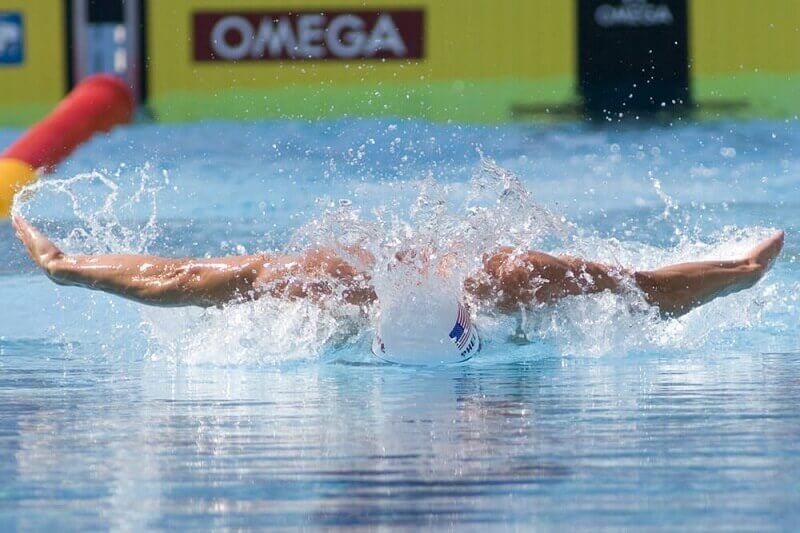You didn’t choose the butterfly life. It chose you.
There is something poetic about watching a swimmer perform butterfly. The undulation, the smoothness, the give and take with the water.
From Misty Hyman, to Denis Pankratov to Michael Phelps, the greats of the discipline exemplify what the butterfly can look like when done at a high level.
Somewhere along the way you or your coach realized you had the gift (curse?) of having a better-than-average butterfly.
Suddenly, “choice” during practice actually means “fly,” you’ve assumed the third leg of every medley relay, and you’ve grudgingly come to accept that you are one of the rare, the few—the butterflyer.
Being a butterflyer does have its perks.
Other swimmers tend to avoid swimming in your lane. Your shoulders are thick even by swimmer’s standards. You are viewed with awe and respect for your choice of stroke. And your underwaters are pretty awesome—after all, the more time down there is less time you have to spend on the surface swimming.
That being said, the life of a butterflyer is not without struggle:
1. Lane sharing is rough.
The butterfly specialist finds kinship in fellow butterfly swimmers. We understand each other. That being said, sharing a lane among a group of them is the worst. Swimming in a lane with one other butterflyer can be interesting, but a lane full of them is complete mayhem.
2. When a butterflier dies, they die.
Butterfly, when done properly is a thing of beauty. It’s smooth, effortless, and fluid.
But when we die towards the end of a tough set or a tough race? Just plain ugly.
See Also: How NOT to Pace Your 200 Butterfly
In the other three strokes if your stroke rate collapses at least you can retain some sense of dignity. With butterfly it becomes a matter of literally keeping your head above water.
3. It’s impossible to swim butterfly “easy.”
Ever had a coach ask you to swim a 200 butterfly “easy”? Yeah. Exactly. There is are only two different settings for butterfly—fast or agony.
4. You cannot avoid doing the 200 fly.
One of the curses of being a flier is that you only have two events to choose from (3 if the meet you are attending is kind enough to give you the option of doing the 50).
Which means that as a flier you are resigned to a life of doing the 200 butterfly at meets. Which might not be so bad short course, when you can extend out those underwaters, but when long course season comes around…
5. Swimming in the gutter lane is the worst.
Training in the outside lanes at your local pool means you have developed thick, leathery callouses on your knuckles.
You’ve slapped your hands on everything the pool has to offer: the flag pole, the ladders, the lip of a water slide, the lane rope, and all of your teammates.
See Also: Butterfly Sets: How to Dominate Your Next 100m Butterfly
Swimming butterfly means unleashing your wings, and it’s hard when one of them is getting clipped by the gutter every other stroke.
6. Meet warm-ups are always an adventure.
You feel bad, you really do, but hey, you need to warm-up as well! Meet warm-ups pose a challenge for the regular non-fly swimmer, with sometimes more than 500 swimmers all in the pool at the same time, doing completely different warm-ups.
Throw in a bunch of butterflyers in there and you get an extra large helping of tangled arms, slapped forearms and forced single arm fly.












